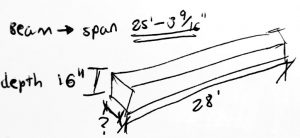| Class date |
Lecture Schedule |
Readings |
Assignments |
| Monday, 06, 1, 2020 |
01 Introduction
– Collect names and pictures of students, assign logo for titleblock
-Introduce Module A (existing building documentation and grid) |
Ching, Building Construction Illustrated,
Chapter 1, pp. 1.02-1.06,
Chapter 2, pp. 2.02-2.30,
Chapter 12, pp. 12.02-12.05, 12.08-12.09 |
A01 Site Maps <-Intro [site, plan and grid] |
|
02 Grids
– Introduction to grids, explain scale and linetype in CAD |
|
|
| Tuesday, 06, 2, 2020 |
03 Print
– Introduction to lineweights, ctb files and layouts in CAD |
|
A01 Site Maps ->DUE
A02 Plans and Elevations Introduce Assignment A2 (Plans and Elevations) |
|
|
|
|
| Wednesday, 06, 3, 2020 |
04 XREF s Elvations & Sections
– Desk crits |
|
|
|
05 Concrete, Mix
-Desk crits elevations & sections |
|
A02 Plans and Elevations –>due |
| Thursday, 06, 4, 2020 |
06 elevations & sections
– Drawing standards (see #16)
– Desk crits, open questions |
Allen and Iano, Concrete Construction
Chapter 13, pp. 515-551
Ching, Building Construction Illustrated,
Chapter 5, pp. 5.04-5.09,
Chapter 12, pp. 12.04-12.05 |
Sketchbook check complete / incomplete |
|
07 Concrete (cast in place)
– Desk crits, open questions |
Allen and Iano,
Sitecast Concrete Framing Systems
Chapter 14, pp. 565-599
Ching, Building Construction Illustrated,
Chapter 1, pp. 1.32
Chapter 3, pp. 3.16
Chapter 6, pp. 6.04 |
A03 Pin-up |
| Monday, 06, 8, 2020 |
09 Foundations
– Desk crits, open questions |
Allen and Iano, Foundations
Chapter 2, pp. 29-38, pp. 56-71
Ching, Building Construction Illustrated,
Chapter 3, pp. 3.02-3.26 |
|
|
15 Drawing standards to 06 |
|
|
| Tuesday, 06, 9, 2020 |
10 DURA (Solar Decathlon project)
– Desk crits, open questions [Module A complete]
– sketchbook review including readings and desk crits |
|
Sketchbook Grated 1 0f 4
Assigned: B01 Reference material |
|
|
Assignment A4 due |
A04 Final Module A ->due |
| Wednesday, 06, 10, 2020 |
11 Wood
– Desk crits, open questions |
Readings: Chapter 3, Pages 84 – 127,
Fundamentals of Building Construction / Materials & Methods
By Edward Allen & John Wiley (5th Edition) |
B01 Reference material -> due
Introduce B02 In class basement and ground floor plans |
|
12 Foundation Calculations |
|
B02a In class –> due basement and ground floor plans
Introduce B02 all plans
Introduce B03 elevations |
| Thursday, 06, 11, 2020 |
13 Framing types
– Desk crits, open questions |
Readings: Chapters 5 and 6 Pages 161 – 253,
Fundamentals of Building Construction / Materials & Methods
By Edward Allen & John Wiley (5th Edition) |
B02 all plans –> due |
|
14 Joists
– Desk crits, open questions |
|
Sketchbook Grated 2 0f 4 –> due
B03 elevations –> due
Introduce B04 Joist Plans |
| Monday, 06, 15, 2020 |
|
|
B04 Joist Plans Pin up |
|
16 Studs layout
– Desk crits, open questions |
|
B04 Joist Plans –> due
Introduce B05 Stud Plans |
| Tuesday, 06, 16, 2020 |
17 3D Framing |
|
B05 Stud Plans Pin up
Introduce B06 3D Framing |
|
|
Midterm grades |
B05 Stud Plans –> due
Introduce B07 Wall sections |
| Wednesday, 06, 17, 2020 |
|
|
|
|
|
|
|
| Thursday, 06, 18, 2020 |
18 Wall sections Part1
– Desk crits, open questions |
|
B06 3D Framing Pin up |
|
19 Wall sections Part2
– Desk crits, open questions |
|
|
| Monday, 06, 22, 2020 |
20 Roof |
|
|
|
|
|
|
| Tuesday, 06, 23, 2020 |
21 Stairs |
|
B06 3D Framing –> due |
|
22 Building Envelope |
|
|
| Wednesday, 06, 24, 2020 |
26 Mechanical |
|
B07 Wall sections –> due Heavily weighted grade
Introduce B07 Wall sections |
|
|
|
|
| Thursday, 06, 25, 2020 |
23 Redlining |
|
Module B pinup (all B assignments) |
|
|
|
|
| Monday, 06, 29, 2020 |
Module C
– 27 Heavy timber sizing
– Desk crits, open questions |
|
Introduce B08 final (all documents) |
|
|
|
|
| Tuesday, 06, 30, 2020 |
28 Heavy timber details
– Desk crits, open questions |
|
Introduce Assignment C |
|
29 High-tech wood construction
– Desk crits, open questions |
|
|
| Wednesday, 07, 1, 2020 |
– Final Examination
– C Final Pin Up |
|
Sketchbook Grated 4 0f 4 –> due |
|
|
Last day of semester |
Assignment C –> due |





